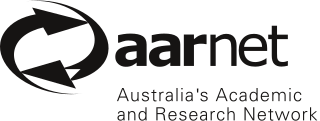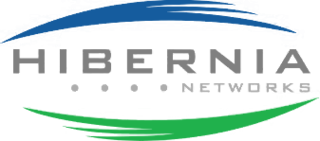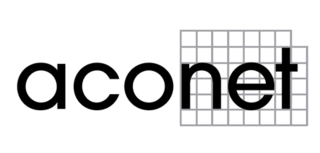
3Com Corporation was an American digital electronics manufacturer best known for its computer network products. The company was co-founded in 1979 by Robert Metcalfe, Howard Charney and others. Bill Krause joined as President in 1981. Metcalfe explained the name 3Com was a contraction of "Computer Communication Compatibility", with its focus on Ethernet technology that he had co-invented, which enabled the networking of computers.

A metropolitan area network (MAN) is a computer network that interconnects users with computer resources in a geographic region of the size of a metropolitan area. The term MAN is applied to the interconnection of local area networks (LANs) in a city into a single larger network which may then also offer efficient connection to a wide area network. The term is also used to describe the interconnection of several LANs in a metropolitan area through the use of point-to-point connections between them.
In computer networking, peering is a voluntary interconnection of administratively separate Internet networks for the purpose of exchanging traffic between the "down-stream" users of each network. Peering is settlement-free, also known as "bill-and-keep" or "sender keeps all", meaning that neither party pays the other in association with the exchange of traffic; instead, each derives and retains revenue from its own customers.

A Tier 1 network is an Internet Protocol (IP) network that can reach every other network on the Internet solely via settlement-free interconnection. Tier 1 networks can exchange traffic with other Tier 1 networks without paying any fees for the exchange of traffic in either direction. In contrast, some Tier 2 networks and all Tier 3 networks must pay to transmit traffic on other networks.
The Point-to-Point Protocol over Ethernet (PPPoE) is a network protocol for encapsulating Point-to-Point Protocol (PPP) frames inside Ethernet frames. It appeared in 1999, in the context of the boom of DSL as the solution for tunneling packets over the DSL connection to the ISP's IP network, and from there to the rest of the Internet. A 2005 networking book noted that "Most DSL providers use PPPoE, which provides authentication, encryption, and compression." Typical use of PPPoE involves leveraging the PPP facilities for authenticating the user with a username and password, predominately via the PAP protocol and less often via CHAP. Around 2000, PPPoE was also starting to become a replacement method for talking to a modem connected to a computer or router over an Ethernet LAN displacing the older method, which had been USB. This use-case, connecting routers to modems over Ethernet is still extremely common today.
Internet exchange points are common grounds of IP networking, allowing participant Internet service providers (ISPs) to exchange data destined for their respective networks. IXPs are generally located at places with preexisting connections to multiple distinct networks, i.e., datacenters, and operate physical infrastructure (switches) to connect their participants. Organizationally, most IXPs are each independent not-for-profit associations of their constituent participating networks. The primary alternative to IXPs is private peering, where ISPs directly connect their networks to each other.

AARNet provides Internet services to the Australian education and research communities and their research partners.
MRV Communications is a communications equipment and services company based in Chatsworth, California. The company is a provider of optical communications network infrastructure equipment and services to a broad range of telecom concerns, including multi-national telecommunications operators, local municipalities, MSOs, corporate and consumer high-speed G-Internet service providers, and data storage and cloud computing providers.
The MAE was the first Internet Exchange Point (IXP). It began in 1992 with four locations in Washington, D.C., quickly extended to Vienna, Reston, and Ashburn, Virginia; and then subsequently to New York and Miami. Its name stood for "Metropolitan Area Ethernet," and was subsequently backronymed to "Metropolitan Area Exchange, East" upon the establishment of MAE-West in 1994. The MAE predated the National Information Infrastructure plan, which called for the establishment of IXPs throughout the United States. Although it initially had no single central nexus, one eventually formed in the underground parking garage of an office building in Vienna, VA.
The next-generation network (NGN) is a body of key architectural changes in telecommunication core and access networks. The general idea behind the NGN is that one network transports all information and services by encapsulating these into IP packets, similar to those used on the Internet. NGNs are commonly built around the Internet Protocol, and therefore the term all IP is also sometimes used to describe the transformation of formerly telephone-centric networks toward NGN.
Global Cloud Xchange (GCX) is a company which provides network services for enterprises, new media providers and telecoms carriers. In September 2022, it was acquired by 3i Infrastructure for $512 million.

Hibernia Networks, alternately known as Hibernia Atlantic, was a privately held, US-owned provider of telecommunication services. It operated global network routes on self-healing rings in North America, Europe and Asia including submarine communications cable systems in the North Atlantic Ocean which connected Canada, the United States, the Republic of Ireland, the United Kingdom and mainland Europe. Hibernia managed cable landing stations in Dublin, Republic of Ireland; Coleraine, Northern Ireland; Southport, England; Halifax, Canada; Lynn, Massachusetts, United States.
In a hierarchical telecommunications network, the backhaul portion of the network comprises the intermediate links between the core network, or backbone network, and the small subnetworks at the edge of the network.

Allied Telesis is a network infrastructure–telecommunications company, formerly Allied Telesyn. The company is Headquartered in Japan, and has other branches in San Jose, California. The company was Founded in 1987, as a global provider of secure Ethernet & IP access solutions along with deployment of IP triple play networks over copper and fiber access infrastructure.

Metro Ethernet Routing Switch 8600 or MERS 8600 is a modular chassis router and/or switch manufactured by Nortel now acquired by Ciena. The MERS 8600 supports the Provider Backbone Bridges (PBB), Provider Backbone Transport (PBT) technologies and carrier class Operations Administration & Maintenance (OAM) tools.
Juniper M series is a line of multiservice edge routers designed and manufactured by Juniper Networks, for enterprise and service provider networks. It spans over M7i, M10i, M40e, M120, and M320 platforms with 5 Gbit/s up to 160 Gbit/s of full-duplex throughput. The M40 router was the first product by Juniper Networks, which was released in 1998. The M-series routers run on JUNOS Operating System.

KVH Co., Ltd., previously known as KVH Telecom, was founded by Fidelity Investments in 1999 as an Asia-Pacific IT/communications service provider. Through its facility-based optical fiber networks, data centers, and cloud services platform, KVH is an information delivery platform providing integrated IT and communication solutions to enterprise businesses. KVH serves media, manufacturing, carrier, and financial services as its key customer segments, and offers all customers bilingual support in Japanese and English.

GTT Communications, Inc. (GTT) is a managed network and security services provider to global organizations, headquartered in McLean, Virginia. GTT operates a global Tier 1 IP network, and its communication services include voice and video, Internet, Voice over Internet Protocol (VoIP), Wide Area Networking, SD-WAN, Secure Access Service Edge (SASE), Network Security, Cloud Security, Multi-Protocol Label Switching (MPLS), and Managed and Professional Services. GTT serves global enterprise customers across North and South America, Europe, and Asia Pacific.

ACOnet is the name of the national research and education network in Austria. The ACONET association promotes the development and use of that network. ACOnet is not managed and operated by ACONET, but by a unit in the Computing Centre of the University of Vienna that also operates the Vienna Internet Exchange. The University of Vienna represents ACOnet internationally, for example as a member of TERENA and as a participant in the project that funds the European backbone network GÉANT.
Global Capacity is a Waltham, Massachusetts-based provider of telecommunications Connectivity-as-a-Service including Carrier Ethernet, used by companies for Internet access and WAN connectivity. Network services are offered using the company's One Marketplace hub, which aggregates the access and pricing information for broadband telecommunications services, including MPLS VPN, Ethernet over copper and Digital Subscriber Line (DSL). The company buys and combines multiple high-speed network connections and then resells multiple lower-speed connections to customers. The company also manages and updates LATTIS, a proprietary database of telecom pricing information.








